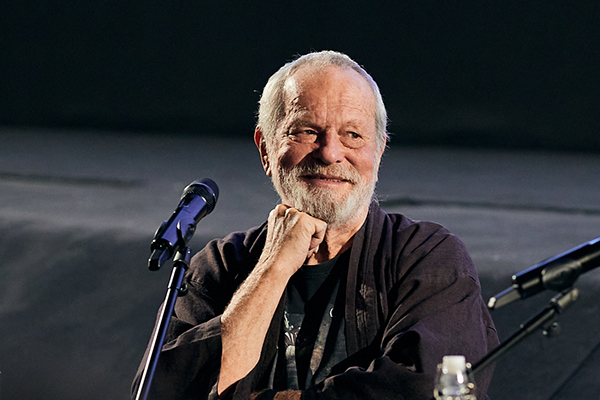Terry Gilliam :
« Believe in your dreams, and if that doesn’t work, take LSD »
PostED ON OCTOBER 17, 2023
Terry Gilliam talked about his career and his vision of the world, while keeping his audience laughing.
CINEPHILIA AND TRAJECTORY AS A FILMMMAKER
When I was a teenager, I went to see movies like any other young person, without any awareness of the artistic aspect. But I moved to New York in the 1960s and a lot of the classics were shown there. That's when I realised that I wanted to see all the Buster Keatons again. Metropolis (1927) and The Cabinet of Dr. Caligari (1920) were films that really excited me. They weren't like the Dean Martin movies and so on. I like to tackle different subjects, but I learnt the secret of success from Mary Poppins: ”Just a spoonful of sugar helps the medicine go down…”
ARTISTIC VISION
The tension between fantasy and reality interests me. You need both to lead a more or less decent life. With my films, I try to offer another way of thinking, another way of imagining the world. What's more, our most important sense is not touch or hearing, but our sense of humour.

© Léa Rener
MONTHY PYTHON : 1968-69
We were very lucky, a gang of six who made each other laugh. We were on the BBC and there were only three channels, so it was easy to find us. What made us laugh also made other people laugh. As far as Life of Brian is concerned, could the film still exist today? People censor themselves so much, but we have to keep expressing ourselves. People are strong and we have to believe that we can do whatever we want.
BRAZIL (1985)
I don't think about the future world when I make a film, I make a film in the present. When Brazil was first shown, half the cinemas were empty. Universal put a lot of pressure on me to change it, but I didn't let them. Monty Python gave me the arrogance that kept me going. The problem in Hollywood is that movies are tested by people with empty lives who suddenly have enormous power over a work.
THE MAN WHO KILLED DON QUIXOTE
Don Quixote is the story of a failure, but his secret is resilience: he falls and manages to recapture his dream. You have to become Don Quixote to recount Don Quixote. But unlike Orson Welles, I finished my film!
THE FISHER KING (1991)
The Fisher King is my most memorable set experience. It was also important from the point of view of gender equality. Now we realise that women count in the cinema, but at the time, even though women were omnipresent in the studios, which I thought was great, they weren’t exactly treated in the best way. During filming, I realised that the two actresses were in very small dressing rooms, whereas the men, Robin Williams, Jeff Bridges and myself had incredible dressing rooms. I said to the producers: "Make the dressing room as big as possible for them". They refused. So I asked for a dressing room that small. That was clearly unacceptable. In the end, they gave them two dressing rooms identical to ours. The conclusion: it proved that women were shaped by the system and thought like the men in power. So if you're in power, do things differently!
TWELVE MONKEYS (1995)
I received the script and found it full of incredible ideas. Nobody wanted to shoot it. I didn't know that the studios had already paid a million dollars and that they wanted their money's worth. When it came to casting, I was very excited at the idea of casting Bruce Willis. It was a chance for him, for an “outside” action movie hero, to go inside himself, and he loved the idea. I told him about the scene in Die Hard where he walks barefoot on broken glass after everything around him has been destroyed and he starts crying on the phone to his wife. He told me that the idea for that scene came from him. It just showed that he had it in him.
Reported and edited by Charlotte Pavard

